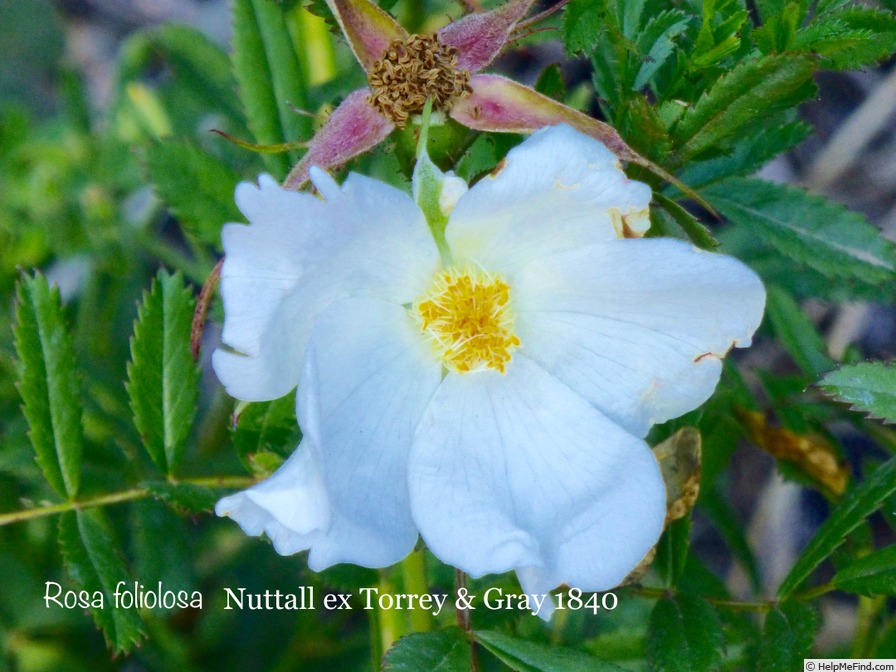|
|
'Rosa foliolosa Nutt. ex Torr. & A.Gray' rose Description

Photo courtesy of Rosewild
ARS:
White, near white or white blend Species.
Origin:
Introduced by Unknown in 1880 as ' Rosa foliolosa Nutt. ex Torr. & A.Gray'.
Bloom:
White or pink. White, extremely pale pink or rose-colored. Strong fragrance. 5 petals. Average diameter 2". Medium, single (4-8 petals), borne mostly solitary, in small clusters bloom form. Prolific, once-blooming spring or summer. Medium, long buds.
Habit:
Short, bushy, few or no prickles/thorns, suckers on its own roots. Small, semi-glossy, dark green, attractive fall color foliage. 7 to 11 leaflets.
Height: 18" to 3' (45 to 90cm).
Growing:
USDA zone 6b through 9b (default). Can be used for beds and borders, garden, hedge, landscape, rock garden, shrub or specimen. Remove old canes and dead or diseased wood..
Patents:
Patent status unknown (to HelpMeFind).
Parentage:
If you know the parentage of this rose, or other details, please contact us.
Notes:
The species description given in 1958 by Walter Lewis places the white form, f. alba (Bridwell) Rehder, in synonymy with the species in chief, which is now described as white to pink. Native to Oklahoma (where it is common), Arkansas and Texas. The color of the blooms ranges from white (especially in Texas, where it is known as White Prairie Rose) to pale blush to rose-pink (especially in Okalhoma). See References for the long history of the dominant color being described as pink based on a comment added to Nuttal's original description by Torrey and Gray.
Rosa foliolosa in gardens and commerce might not ne the true species. See Member Comments.
|